Women in Turkey
.jpg) Latife Uşşaki (Atatürk's wife) in 1923 | |
| Gender Inequality Index | |
|---|---|
| Value | 0.366 (2012) |
| Rank | 68th |
| Maternal mortality (per 100,000) | 20 (2010) |
| Women in parliament | 14.2% (2012) |
| Females over 25 with secondary education | 26.7% (2010) |
| Women in labour force | 30.5% (employment rate OECD definition, 2015)[1] |
| Global Gender Gap Index[2] | |
| Value | 0.6081 (2013) |
| Rank | 120th out of 144 |
| Women in Turkey |
|---|
 |
The role of women in contemporary Turkey is defined by an ongoing gender equality struggle, contributing elements of which include predicate conditions for EU membership candidacy, prevalent political tides that favour restrictive patriarchal models, and woman's rights activism. Women in Turkey continue to be the victims of rape and honor killings; furthermore research by scholars[3][4] and government agencies[5] indicate widespread domestic violence in Turkish population.
Women in Turkey also face significant disparities in employment, and, in some regions, education. The participation of Turkish women in the labor force is less than half of that of the European Union average and while several campaigns have been successfully undertaken to promote female literacy, there is still a gender gap in secondary education and an increasing gender gap in higher education. There is also widespread occurrence of childhood marriages in Turkey, the practice being especially widespread in the eastern and central parts of the country.
History

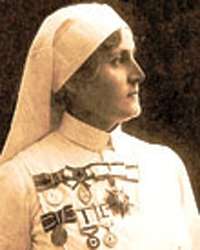
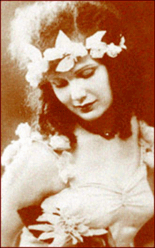

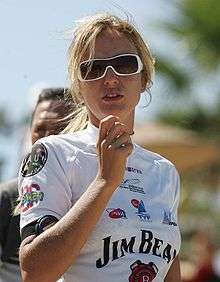
Turkish model and windsurfer

Turkish industrialist
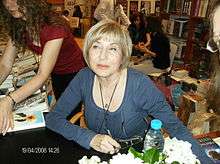

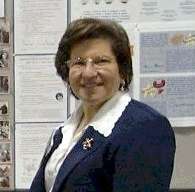
Astronomer
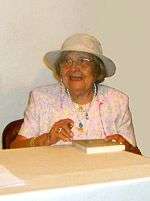
Sumerologist
Turkish sprinter, winner of 2010 and 2012 European Athletics Championships in 100 m.hurdles
In the course of the 16th and 17th centuries during the Sultanate of Women, women of the Imperial Harem had extraordinary influence on politics of Ottoman Empire. Many of the Sultans during this time were minors and it was their mothers, like Kösem Sultan, or sometimes daughters of the sultan as Mihrimah Sultan, leaders of the Harem, who effectively ruled the Empire. Most of these women were of slave origin. The period started in 1520 during the reign of Suleyman the Magnificent until 1656, the reign of Mehmed IV.
During the decline of the Ottoman Empire in the 19th century, educated women within the elites of Istanbul began to organise themselves as feminists. With the Tanzimat reforms, improving women's conditions was considered as part of a wider modernisation effort. Ottoman women's movement began to demand rights.[6] They fought to increase women's access to education and paid work, to abolish polygamy, and the peçe, an Islamic veil. Early feminists published woman magazines in different languages and established different organizations dedicated to the advancement of women.[7] The first women's association in Turkey, the Ottoman Welfare Organization of Women, was founded in 1908 and became partially involved in the Young Turks Movement. Writers and politicians such as Fatma Aliye Topuz, Nezihe Muhiddin and Halide Edip Adıvar also joined the movement.[7] In her novels, Halide Edip Adıvar criticised the low social status of Turkish women and what she saw as the lack of interest of most women in changing their situation.
During the Turkish War of Independence, Kara Fatma a widow proved herself as a successful milita leader.
After the founding of the Turkish Republic in 1923, the feminist movement gradually became part of the Kemalist modernization efforts. Polygamy was banned, divorce and inheritance rights were made equal.[7] In the 1930s, Turkey gave full political rights to women, including the right to elect and be elected locally (in 1930) and nationwide (in 1934).[8] There still remained, however, a large discrepancy between formal rights and the social position of women.[7] In the 1980s, women's movements became more independent of the efforts to modify the state. After the 1980 Turkish coup d'état, women from both urban and academic milieus began to meet in reading groups and discuss feminist literature together. In these "awareness-raising groups", which were established notably in Istanbul, Ankara and Izmir, they criticized the standard construction of the family as well as the gender-specific role behavior that was forced on women. Independent feminist women's magazines were founded to expose the frequency of sexual harassment and violence against women.[7] In 1987 feminists organized the first public protest against male violence, followed by campaigns against sexual harassment, "purple needle", and campaigns seeking the right of self-determination over the female body. These campaigns arose due to women's wish to reject the traditional patriarchal code of ethics, honor, and religion which left men to decide the fate of the female body. The second wave of the women's movement in Turkey reached a wider and more diverse group of women than the first women's movement.[7]
The acceptance of women's issues as an independent political and planning problem was discussed for the first time in the Fifth Five Year Development Plan (1985–1990), and "the General Directorate for the Status and Problems of Women" was established as a national mechanism in 1990. The General Directorate, which was connected to the Prime Ministry in 1991, has been carrying out its activities under the responsibility of a State Ministry. It conducts a large variety of activities with the objective of protecting women's rights, of strengthening the position of women in social, economic, cultural and political life, and of providing the equal utilization of rights, opportunities and capacities. Since the 1990s, feminist discourse has become institutionalized, with the foundation of women's studies centers and university programs at universities such as Marmara University or as Istanbul University.[7] In 1993, Tansu Çiller became the first female Prime Minister of Turkey.
In 2002 the Turkish government reformed Turkish criminal and civil law, and since then, the rights of women and men during marriage, divorce, and any subsequent property rights have all been equalized.[7] A criminal law has been established that deals with the female sexuality as a matter of individual rights, rather than as a matter of family honor. Additions to the Turkish constitution oblige the state to use all the necessary means to promote the equality of the sexes. Family courts were also created, labour laws were instituted to prohibit sexism, and programs were created to educate against domestic violence and to improve access to education for girls.[7]
Legal rights
Turkey is a party to the Convention on the Elimination of All Forms of Discrimination Against Women since 1985, as well as to its Optional Protocol since 2002.[9]
Article 10 of the Turkish Constitution bans any discrimination, state or private, on the grounds of sex. It is the first country which had a woman as the President of its Constitutional Court, Tülay Tuğcu. In addition, Turkish Council of State, the supreme court for administrative cases, also has a woman judge Sumru Çörtoğlu as its President.
The article 41 of the Turkish Constitution was revised to read that the family is "based on equality between spouses".[10] The new code also granted women equal rights to property acquired during marriage, which was supposedly meant to give economic value to women’s labor within the family household.[10]
The minimum age for marriage was also raised to 18 (17 with parental consent).[10] In cases of forced marriage, women have right to ask an annulment within the first 5 years of marriage.[10] In 2004, an update to article 10 of the constitution placed the responsibility for establishing gender equality on the state: "men and women have equal rights. The state shall have the obligation to ensure that this equality exists in practice".[10]
In 2005, the Turkish penal code was changed to criminalize marital rape and harshen the sentences for those convicted of honor killings, which previously carried reduced sentenced because of "provocation".[11] The Human Rights Directorate reported that the number of honor killings committed in Turkey rose to 220 in 2007, with most of the killings occurring in major cities.[11]
The Islamic headscarf, worn by more than 20% of Turkish women,[12] is banned to women working in public offices, including school teachers and university academic personnel, during the practice of their functions. Girl students in primary and secondary education also are not allowed to use headscarf, except in optional religion classes.
Politics
Feminism
The first wave of Turkish feminism occurred in the early 20th century, when women's organizations began to demand equality in civic and political rights. During this early period, the women's rights claims overlapped with the Kemalist reform process in the aftermath of the Republic.[13]
Second wave feminism reached Turkey in the 1980s, bringing up issues common to the movement which had emerged in the West in the 1960s, such as the elimination of violence against women, the oppression experienced in the family and the challenge against virginity tests, then a common practice for women who were about to get married or who had been subjected to sexual assault.[13]
The rise of a global civil society and the internationalization of women’s organizations and the accession of Turkey to the European Union have given women’s organizations the possibility of accessing foreign funds. The number of women’s organizations as well as the projects that these organizations conduct have increased.[13]
Political representation
In 1930s for the first time Turkish women entered politics. The first elected female mayor was Sadiye Hanım (1930). In the elections held on 8 February 1935 18 women entered the parliament. One of them, Hatı Çırpan was a muhtar (village head) of a village prior to entrance to parliament. The first female city mayor was Müfide İlhan in 1950. Although representation of women in political and decision making bodies is relatively low, Tansu Çiller has been Prime Minister between 1993 and 1996. The number of women in the Turkish parliament has increased to 14.3% after the Turkish general election, 2011 (79 individuals in the parliament), most of them are affiliated with the Justice and Development Party.[14] In 1975 the percentage was 10.9 and in 2006 it was 16.3.[15] Only 5.58 percent of mayors are women and in the whole of Turkey there is one governor (among 81) and 14 local governors.[8]
Crime against women
The murders of women in Turkey increased from 66 in 2002 to 953 in the first seven months of 2009.[16] In the Eastern and Southeastern Anatolia regions in particular, women face domestic violence, forced marriages, and honor killings.[17] Şefkat-Der, a Turkish non-governmental organization, has suggested granting licensed, tax-free guns to women as a way to combat domestic violence.[18]
Domestic violence
According to report by the Turkish government dating from 2009, 42% of the surveyed women said they had been physically or sexually abused by their husband or partner.[19] Almost half of them never speaking to anyone about this, and only 8% approach government institutions for support.[20] When they do approach them, police and gendarmerie sometimes prefer to attempt to “reconcile” the families rather than protecting them.[20] While the rates of violence are particularly high among poor, rural women, one third of the women in the highest economic brackets have also been subject to domestic violence.[20]
According to a United Nations report published in July 2011, 39% of women in Turkey had suffered physical violence at some time in their lives, compared with 22% in the United States.[16] Even though every municipality with more than 50,000 inhabitants is required by law to have at least one women’s shelter, there are just 79 in the whole country.[16]
Rape
According to a study, some commonly-expressed views on rape were given to individuals from various professions, who were asked to agree or disagree; results recorded that 33% of the police officers agreed that "some women deserve rape", 66% of police officers, as well as nearly 50% of other professional groups except the psychologists about 18% and 27% of psychiatrists, suggested that "the physical appearance and behaviors of women tempt men to rape."[21]
In 2015, Turkish university student Özgecan Aslan was murdered as she resisted a rape attempt[22] on a minibus in Mersin. Her burnt body was discovered on 13 February. The murder was committed by Turkish minibus driver Ahmet Suphi Altındöken, his father Necmettin Altındöken and his friend Fatih Gökçe.[23] According to Turkish Daily Sabah, Özgcan Aslan became a symbol for Turkish women who are the victims of violence.[24]
In 2013, The Guardian reported that 'the rape and torture of Kurdish prisoners in Turkey are disturbingly commonplace'. According to a report from Amnesty International in 2003, Hamdiye Aslan, who was accused of supporting the Kurdish separatist group, the PKK, had been detained in Mardin Prison, south-east Turkey, for almost three months in which she was reportedly blindfolded, anally raped with a truncheon, threatened and mocked by officers.[25]
Reporting on cases of sexual abuse in Turkey is often difficult; the issue is still taboo in Turkish culture, as well as the fact that much of Turkish media don't report on such cases as they tarnish the country's modern and secular image. The result of this is that many injustices within Turkey, including systematic rapes carried out in prisons to maintain power over communities, go unheard by the rest of the world.[25]
Honor killings
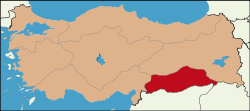
A July 2008 Turkish study by a team from Dicle University on honor killings in the Southeastern Anatolia Region, the predominantly Kurdish area of Turkey, has so far shown that little if any social stigma is attached to honor killing. The team interviewed 180 perpetrators of honor killings and it also commented that the practice is not related to a feudal societal structure, "there are also perpetrators who are well-educated university graduates. Of all those surveyed perpetrators, 60 percent are either high school or university graduates or at the very least, literate".[26][27] In 2010 a 16-year-old girl was buried alive by relatives for befriending boys in Southeast Turkey; her corpse was found 40 days after she went missing.[28] There are well documented cases, where Turkish courts have sentenced whole families to life imprisonment for an honor killing. Such a case was on 13 January 2009, where a Turkish Court sentenced five members of the same family to life imprisonment for the honor killing of Naile Erdas, a 16-year old Kurdish girl who got pregnant as a result of rape.[29][30]
A June 2008 report by the Turkish Prime Ministry's Human Rights Directorate said that in Istanbul alone there was one honor killing every week, and reported over 1,000 during the previous five years. It added that metropolitan cities were the location of many of these, whilst the perpetrators of these crimes in such cities mostly originated from Eastern Turkey.[31][32][33] The mass migration during the past decades of rural population from Southeastern Turkey to big cities in Western Turkey has resulted in cities such as Istanbul, Ankara, Izmir, and Bursa having the highest numbers of reported honor killings.[34][35] Most honour-related crimes happen in the rural Kurdish region, where a feudal, patriarchal system survives, but as Kurds have fled these regions, the crime is also spreading into cities across Turkey.[33][36] Honor killings continue have some support in the conservative parts of Turkey, especially in southeastern Turkey, where most of the crimes take place.[37] A survey where 500 men were interviewed in Diyarbakir found that, when asked the appropriate punishment for a woman who has committed adultery, 37% of respondents said she should be killed, while 21% said her nose or ears should be cut off.[36][38][39][39]
Human trafficking
In 2008, critics have pointed out that Turkey has become a major market for foreign women who are coaxed and forcibly brought to the country by international mafia to work as sex slaves, especially in big and touristic cities.[40][41][42]
Education
While still trailing male literacy rates, female literacy rates in Turkey have grown substantially to above 90% in 2012.[43] Illiteracy is particularly prevalent among rural women, who are often not sent to school as girls.[43] Half of girls aged between 15 and 19 are neither in the education system nor in the workforce.[44] The government and various other foundations are engaged in education campaigns in Southeastern Anatolia to improve the rate of literacy and education levels of women.[45] In 2008, 4 million women were illiterate, as opposed to 990 thousand men.[46] A 2008 poll by the Women Entrepreneurs Association of Turkey showed that almost half of urban Turkish women believe economic independence for women is unnecessary reflecting, in the view of psychologist Leyla Navaro, a heritage of patriarchy.[47]
In the 2012-2013, the schooling ratio of girls (at 99.61%[48] as of 2014 according to the Turkish Statistical Institute) exceeded that of the boys for the first time in Turkish history. The gender gap in secondary education (5.3% lower than boys) remained, albeit at much lower levels in comparison to the 2002-2003 educational year (25.8%). However, the gender gap in higher education increased between 2002 and 2012 to 9.5%.[49] Significant regional differences still persist, with only 15.9% of girls attending secondary school in the Muş Province as of 2010, as opposed to 82.4% in the Bilecik Province, the province with the highest percentage.[50] In 2009, the provinces with the lowest schooling ratios for girls were Bitlis, Van and Hakkari, all in southeastern Turkey, while those with the highest ratios were Ankara, İzmir and Mersin, all in western Turkey. Dropout rates for girls at primary level are higher than boys, especially concentrating at the fifth and sixth years.[46]
Employment
The employment rate (for ages 15-64), as of 2015, was 30.5% for women, much lower than that of men which was 69.8%.[51] In 2011, out of 26 million employable women, only 5.9 million were in the labor force.[52] 23.4% of women have either been forced by men to quit their jobs or prevented from working.[53] The rate of women not covered by social security is 84% in the East and 87% in the Southeast.[44]
Women’s employment has decreased since 2000 and the participation of women in the workforce lags behind some Islamic countries as well as western countries.[44] One of the reasons for this is the increased migration of rural women, who would otherwise have been employed in the agriculture sector.[44] Compared to other Islamic countries, including Saudi Arabia and Iran, Turkey is the only one with a diminishing rate of women’s employment.[44]
According to a report by Catalyst, in 2008 both parents worked full-time in 11.6% of Turkish households, while in 3.3% one parent worked full-time and one part-time. Only one parent worked full-time in 68.9% of households.[54]
On the other hand, it is possible that the involvement of women in the labour force is very underestimated, due to women working in the informal economy.[55]
Family life
On average, 28% of Turkish women were married before the age of 18. Because of the large regional differences in the incidence of underage marriages, as many as 40~50% are married as minors in some areas, particularly in eastern and Central Anatolia.[56] A report by the Commission on Equality of Opportunity for Women and Men states that childhood marriages are "widely accepted" by Turkish society.[56] A bride price is still paid in parts of Turkey.[56]
Clothing
| Do you cover when going outside?[57] | |||
|---|---|---|---|
| 1999 | 2012 | ||
| No, I do not | 47.3% | 66.5% | |
| Yes, I wear a headscarf | 33.4% | 18.8% | |
| Yes, I wear a turban | 15.7% | 11.4% | |
| Yes, I wear a çarşaf | 3.4% | 0.1% | |
| NI/NA | 0.3% | 2.2% | |
A 2006 survey by the Turkish Economic and Social Studies Foundation estimated the prevalence of hair covering among Turkish women at 30%.[58] There are regional variations: in 2005, 30% of women in Istanbul covered their hair, while in central and eastern Turkey, women are rarely seen on the streets, and wear headscarves in public.[59]
The 2006 survey found that, compared to a previous study carried out in 1999, the number of women who employ headcoverings had increased in rural areas, but decreased in cities.[60] It also found that the Çarşaf, Turkish version of Arabic niqab, was almost never worn by women in the 18–39 age group.[60]
From 1999 to 2006, women not wearing head coverings in the 25–39 age group rose from 28% to 41.5%, and in the 18–24 group increased from 40.5% to 50.7%.[60] The prevalence also differs by income: in 2006, 37.2% of women in the medium income group were uncovered, compared to 71.2% in the higher income group.[60]
The same survey asked single men whether they would want prospective wives to go covered: 56% responded no, 44% yes.[60] Only 1.1% of covered women said they cover because of their spouses, fiancees or family, yet 46% thought there would be objections if they went uncovered.[60]
On average, women who wear a headscarf are less tolerant towards gays, atheists, or ethnic minorities.[61]
Women's health
Since 1985, Turkish women have the right to freely exercise abortions in the first 10 weeks of pregnancy and the right to contraceptive medicine paid for by the Social Security. Modifications to the Civil Code in 1926 gave the right to women to initiate and obtain a divorce; only recognized in Malta (a EU country)for both men and women in 2011. Turkish prime minister Erdoğan argued that women should have at least three children.[20]
No gender discrimination exists regarding the laws as well as their practice in the health sector in Turkey. On the other hand, prolific pregnancy and birth have a negative health impact on both the mother and the child. With the 1994 World Population and Development Conference, the Ministry of Health adopted a policy change which included the emotional, social and physical health of women and young girls with an integrated approach, rather than only reproductive health and family planning as it did in the past. Another initiative brought onto the agenda by the Ministry of Health after the Beijing Conference, is to ensure the participation of men in reproductive health and family planning.
Bibliography on feminism in Turkey
History of feminism in Turkey
Feminism during the Ottoman Empire
- Berktay, Fatmagul. (2000). "Osmanlı'dan Cumhuriyet'e Feminizm". Tarihin Cinsiyeti, 2006, Istanbul: Metis Yayinlari. s. 88-111
- Cakir, Serpil. (1996). Osmanli Kadin Hareketi. Istanbul, Metis Kadin Arastirmalari Dizisi, Metis Yayinlari.
- Adivar, Halide Edip. (1913). "Yirminci Asırda Kadınlar" Mektep Müzesi Dergisi.
- Karakisla, Yavuz Selim. (1999). "Osmanli Hanimlari ve Hizmetci Kadinlar", Toplumsal Tarih, Mart 1999, sayi 63, s. 15–24.
- Melissa Bilal ve Lerna Ekmekçioğlu, Bir Adalet Feryadı: Osmanlı'dan Türkiye'ye Beş Ermeni Feminist Yazar, "Hayganuş Mark" (İstanbul: Aras Yayınları), s. 242–263.
- Mojab, Shahrzad. (?). "Part 1: Historical Perspectives". Women of a Non-State Nation: The Kurds. Mazda Publication. s. 25–94.
- Toprak, Zafer. (1992). "II. Mesrutiyet Doneminde Devlet, Aile ve Feminizm", Sosyo-Kulturel Degisme Icinde Turk Ailesi, cilt 1, Basbakanlik Aile Arastirma Kurumu Yayinlari, Ankara, s. 237.
- Zihnioglu,Yaprak. (2003). Kadınsız İnkılap. Metis. (especially pp. 54–115, chap. 5–7.)
- Safarian Alexander. (2007). On the History of Turkish Feminism, "Iran and the Caucasus", vol.11.1, Brill, Leiden - Boston, pp. 141–152.
The Republic and feminism
- Aksit, Elif Ekin (2005). Kizlarin Sessizligi: Kiz Enstitulerinin Uzun Tarihi. Istanbul: Iletisim Yayinlari.
- Arat, Zehra F. (1998). "Kemalizm ve Turk Kadini", (der) Ayse Berktay Hacimirzaoglu, 75 Yilda Kadin ve Erkekler. Istanbul: Turkiye Ekonomik ve Toplumsal Tarih Vakfi Yayini, 51–58.
- Arat, Zehra. Turkiye'de Kadin Olmak (der). Istanbul: Say Yayinlari.
- Arat, Zehra F. (Fall 1994). "Kemalism and Turkish women". Women and Politics. Taylor & Francis. 14 (4): 57–80. doi:10.1300/J014v14n04_05.
- Berktay, Fatmagul. (1993). "Turkiye Solunun Kadina Bakisi: Degisen Bir Sey Var mi?" (der) Sirin Tekeli, 1980'ler Turkiye'sinde Kadin Bakis Acisindan Kadinlar. Istanbul: Iletisim Yayinlari.
- Çağlayan, Handan (2007). Analar Yoldaslar Tanricalar: Kurt Hareketinde Kadinlar ve Kadin Kimliginin Olusumu. Istanbul: Iletisim Yayinlari. ISBN 9789750504921.
- Durakbasa, Ayse (1989). "Cumhuriyet Doneminde Kemalist Kadin Kimliginin Olusumu" Tarih ve Toplum". Tarih ve Toplum. Iletisim Yayinlari. 9 (51).
- Ergün, Emek (February 2013). "Feminist translation and feminist sociolinguistics in dialogue: A multi-layered analysis of linguistic gender constructions in and across English and Turkish". Gender and Language. Equinox. 7 (1): 13–33. doi:10.1558/genl.v7i1.13.
- Edip, Halide (2000). Turk Modernlesmesi ve Feminizm. Istanbul: Iletisim Yayinlari.
- Koçak, Mine. 80'li Yıllar Kadın Hareketi Link to the original document.
- Mojab, Shahrzad (2001), "Introduction: The solitude of the stateless-Kurdish women at the margins of feminist knowledge", in Mojab, Shahrzad, Women of a non-state nation: the Kurds, Costa Mesa, California: Mazda Publishers, pp. 1–10, ISBN 9781568590936. Pdf of book contents.
- Tekeli, Sirin. (1998). Birinci ve İkinci Dalga Feminist Hareketlerin Karşılaştırılmalı İncelemesi Üzerine bir Deneme." 75 Yılda Kadınlar ve Erkekler, İş Bankası ve Tarih Vakfı Yayınları, s. 337–346.
- Stella, Ovadia ve Gülnur Savran; Bozan & Ekin, & Ramazanoglu & Tuksal pieces in Özgürlüğü Ararken, Amargi, s. 37–57, 81–101, 203–221, s. 221–239 (roza ve jujin dergileri), 239–257.
- Nukhet, Sirman (1993). "Feminism in Turkey: A Short History". New Perspectives on Turkey. Contemporary Turkish Studies at the London School of Economics and Political Science. 3 (1): 1–34.
- Selections from Amargi no. 3, Projen Var Mı? (tarih??)
On women and gender
Islam, nationalism and the nation-state
- Acikel, Fethi. (1996). "Kutsal Mazlumlugun Psikopatolojisi", Toplum ve Bilim. (70): 153–199.
- Akin Feride. (1998). "Turban Sorunu: En Buyuk Dusman", Birikim dergisi 114.
Media and women
- Aktanber, Ayse. (1993). "Turkiye'de Medya'da Kadin: Serbest, Musait Kadin veya Iyi Es, Fedakar Anne", (der) Sirin Tekeli, 1980'ler Turkiyesinde Kadin Bakis Acisindan Kadinlar. Istanbul: Iletisim Yayinlari.
- Asuman, Süner. Hayalet Ev: Yeni Türk Sinemasında Aidiyet, Kimlik ve Bellek, "Vasfiye'nin Kız Kardeşleri" (İstanbul: Metis Yayınları), s. 291–305.
Women's bodies, sexuality, and violence
- Ayse Gul Altınay and Yesim Arat, 2007. Türkiye'de Kadına Yonelik Siddet. [Click on for the original document: http://www.kadinayoneliksiddet.org/TurkiyedeKadinaYoneliksiddet.pdf ]
- Kadioglu Ayse (1998) "Cinselligin Inkari: Buyuk Toplumsal Projelerin Nesnesi Olarak Turk Kadinlari", 75 Yilda Kadinlar ve Erkekler, Tarih Vakfi Yurt Yayinlari.
Gender-related division of labor
- Hattatoglu-Ozbek Dilek. (2002). "Ev Eksenli Calisma Stratejileri" (der) Aynur Ilyasoglu, Necla Akgokce, Yerli Bir Feminizme Dogru. Istanbul: Sel Yayincilik.
- Ozbay Ferhunde (1998) "Turkiye'de Aile ve Hane Yapisi: Dun, Bugun, Yarin", (der) Ayse Berktay Hacimirzaoglu, 75 Yilda Kadin ve Erkekler. Istanbul: Turkiye Ekonomik ve Toplumsal Tarih Vakfi Yayini.
- (2002) "Evlerde El Kizlari: Cariyeler, Evlatliklar, Gelinler", (yay. Haz. Ayse Durakbasa) Tarih Yaziminda Sinif ve Cinsiyet. Istanbul: Iletisim Yayinlari.
- Ozyegin Gul (2003) "Kapicilar, Gundelikciler ve Ev Sahipleri: Turk Kent Yasaminda Sorunlu Karsilasmalar", (der) Deniz Kandiyoti, Ayse Saktanber, Kultur Fragmanlari/ Turkiye'de Gundelik Hayat. Istanbul: Metis.
- (2004) Baskalarinin Kiri/Kapicilar, Gundelikciler ve Kadinlik Halleri (Cev. Sugra Oncu) Istanbul: Iletisim Yayinlari.
- Yasin, Yael Navaro. (2000). "Cumhuriyetin Ilk Yillarinda Ev Isinin Rasyonellesmesi", Toplum ve Bilim (84).
- Sirman, Nukhet. (2002). "Kadinlarin Milliyeti", Modern Turkiye'de Siyasi Dusunce (Cilt 4), Istanbul: Iletisim Yayinlari.
Women and property rights
- Toktas, Sule; O’Neil, Mary Lou (December 2013). "How do women receive inheritance? The processes of Turkish women's inclusion and exclusion from property". Asian Women. Research Institute of Asian Women (RIAW). 29 (4): 25–50. doi:10.14431/aw.2013.12.29.4.25.
Women and work
- Erdogan Necmi (2002) "Yok-Sanma: Yoksulluk, Maduniyet ve Fark Yaralari", (der) Necmi Erdogan, Yoksulluk Halleri. Istanbul: Demokrasi Kitapligi.
- Savran Gulnur (2004) Beden, Emek, Tarih: Diyalektik Bir Feminizm Icin. Istanbul: Kanat Yayincilik.
- Bora, Aksu (2005). Kadınların Sınıfı. İletişim. pp. 59–182 (the theoretical overview from pp. 21–59 is highly recommended by Ayse Parla for her gernder class in Sabanci)
Women and gender (overall)
- Agduk-Gevrek, Meltem. (2000). "Cumhuriyet'in Asil Kizlarindan 90'larin Turk Kizlarina" Vatan, Millet, Kadinlar, Iletisim.
- Alakom Rohat 1998. Araştırmalarda Fazla Adı Geçmeyen Bir Kuruluş: Kürt Kadınları Teali Cemati." Tarih Toplum 171 (March): 36–40.
- Amargi. (2009). Kadinlar Arasinda: Deneyimlerimiz hangi kapilari aciyor: II. (der).
- Amargi (Aralik 2008). Oda: Virginia Woolf'un odasindayiz: Deneyimlerimiz hangi kapilari aciyor –I.
- Arat, Zehra. (1997). Kadinlarin Gundemi. (der). Istanbul, Say Yayinlari.
- Arat, Zehra. (1996). Kadin Gerceklikleri. (der). Istanbul, Say Yayinlari.
- Bora Aksu, Asena Gunal, and Gulnur Savran (tarih?), "Yuvarlak Masa." Birikim.
- Edip Halide (1987) Zeyno. Istanbul: Remzi Kitabevi.
- Gürbilek Nurdan. (2004). "Kadınsılaşma Endişesi: Efemine Erkekler, Hadım Oğullar, Kadın-Adamlar," In Kör Ayna, Kayıp Şark. Metis.
- Mutluer, Nil (2008) (der). Cinsiyet Halleri: Turkiye'de toplumsal cinsiyetin kesisim sinirlari. Istanbul, Varlik Yayinlari.
See also
- Secularism in Turkey
- Turkish women in politics
- Turkish women in academics
- Turkish women in literature
- Turkish women in sports
- Child marriage in Turkey
- List of Turkish women who won international beauty pageants
References
![]() This article incorporates public domain material from the Library of Congress Country Studies website http://lcweb2.loc.gov/frd/cs/. (Data as of January 1995.)
This article incorporates public domain material from the Library of Congress Country Studies website http://lcweb2.loc.gov/frd/cs/. (Data as of January 1995.)
- ↑ http://stats.oecd.org/Index.aspx?DatasetCode=LFS_SEXAGE_I_R#
- ↑ "The Global Gender Gap Report 2013" (PDF). World Economic Forum. pp. 12–13.
- ↑ Sallan Gül, Songül (May–June 2013). "The role of the State in protecting women against domestic violence and women's shelters in Turkey". Women's Studies International Forum. ScienceDirect. 38: 107–116. doi:10.1016/j.wsif.2013.01.018.
- ↑ Henneke, J. (2008). "Combating domestic violence in Turkey" (pdf). Sweden: Goeteborgs University.
- ↑ West Yorkshire, Police. "Kadin ve kizlara yönelik şiddetten kaçmanin üç adimi" (pdf). United Kingdom: Home Office.; this document is in Turkish, use a translator such as Google, if you cannot read Turkish.
- ↑ The Women's Movement in Turkey: From Tanzimat towards European Union Membership 1. "The Women's Movement in Turkey: From Tanzimat towards European Union Membership 1" (PDF).
- 1 2 3 4 5 6 7 8 9 Charlotte Binder, Natalie Richman. "Feminist Movements in Turkey".
- 1 2 Questions and Answers on Women's Right Turkish, prepared by the Human Rights Agenda Association; accessed on 14 October 2009
- ↑ "The Right of Women, Gender Equality and Struggle with Violence Against Women". Rep. of Turkey Ministry of Foreign Affairs.
- 1 2 3 4 5 Stop Violence Against Women website
- 1 2 In Turkey, Degrees of Change in Women's Rights – 6 November 2008 | Online NewsHour | PBS
- ↑ BBC NEWS | Europe | Women condemn Turkey constitution
- 1 2 3 Cagla Diner And Sule Toktas. "Waves of feminism in Turkey: Kemalist, Islamist andKurdish women's movements in an era of globalization".
- ↑ "Women deputies constitute 14.3 pct of Turkish parliament | Politics | Worldbulletin News". Worldbulletin.net. 2011-07-27. Retrieved 2014-06-22.
- ↑ UN Joint Program for the Development of Women and Children's Rights, Turkish: Türkiye'de Kadın Olmak; accessed on 14 October 2009
- 1 2 3 "Women See Worrisome Shift in Turkey". New York Times. 2012-04-25.
- ↑ Wilkinson, Tracy (9 January 2007). "Taking the 'honor' out of killing women". Los Angeles Times. Retrieved 6 August 2008.
- ↑ "Fight fire with fire, NGO tells women". Hürriyet Daily News. 2011-12-28.
- ↑ Marchers demand better protection for women in Turkey - CNN
- 1 2 3 4 Women in Turkey: The Numbers Are Stacked Against Them | Human Rights Now - Amnesty International USA Blog
- ↑ "Turkish university students' attitudes toward rape. | HighBeam Business: Arrive Prepared". Business.highbeam.com. 2003-12-01. Retrieved 2013-12-03.
- ↑ "Brutal slaying leads to protests over violence against women in Turkey". Los Angeles Times. Retrieved 15 February 2015.
- ↑ "Türkiye'yi sarsan Özgecan Aslan davasında karar: 3 sanığa da ağırlaştırılmış müebbet". Hurriyet. Retrieved 3 December 2015.
- ↑ "Convicted killer of Özgecan Aslan shot dead in prison". DailySabah. Retrieved 8 May 2016.
- 1 2 Meral Duzgun. "Turkey: a history of sexual violence | Global Development Professionals Network | Guardian Professional". Theguardian.com. Retrieved 2013-12-03.
- ↑ Murat Gezer. "Honor killing perpetrators welcomed by society, study reveals". Today's Zaman. Archived from the original on 19 July 2008. Retrieved 15 July 2008.
- ↑ AYSAN SEV’ER. "Feminist Analysis of Honor Killings in Rural Turkey" (PDF). 'University of Toronto'. Retrieved 2 January 2015.
- ↑ "Girl buried alive in honour killing in Turkey: Report". AFP. 4 February 2010. Retrieved 25 June 2010.
- ↑ Daughter pregnant by rape, killed by family – World. BrisbaneTimes (13 January 2009). Retrieved on 1 October 2011.
- ↑ http://www.canada.com/story.html?id=e6256f9e-e8e4-4f58-af6f-46c19bcc6423
- ↑ "Turkish Press Scanner". www.hurriyetdailynews.com. Retrieved 23 April 2016.
- ↑ "Honor killings claim 1,000 lives in five years". Turkish Daily News. Retrieved 27 September 2008.
- 1 2 http://www.independent.co.uk/news/world/europe/women-told-you-have-dishonoured-your-family-please-kill-yourself-1655373.html Ramita Navai in The Independent
- ↑ Ince, Hilal Onur, Aysun Yarali, and Dogancan Ozsel. "Customary killings in Turkey and Turkish modernization." Middle Eastern Studies 45, no. 4 (2009): 537-551.
- ↑ http://middlab.middlebury.edu/files/2111/04/Honor-Killings-essay1.pdf
- 1 2 http://www.independent.co.uk/voices/commentators/fisk/robert-fisk-the-crimewave-that-shames-the-world-2072201.html
- ↑ http://news.bbc.co.uk/2/hi/europe/8501181.stm
- ↑ Rainsford, Sarah (19 October 2005). "'Honour' crime defiance in Turkey". BBC News. Retrieved 23 December 2013.
- 1 2 http://law.hofstra.edu/pdf/academics/journals/lawreview/lrv_issues_v35n02_ee1_boon_final.pdf
- ↑ Human Trafficking & Modern-day Slavery - Turkey
- ↑ Finnegan, William (5 May 2008). "The Countertraffickers: Rescuing the victims of the global sex trade". New Yorker. Retrieved 6 August 2008.
- ↑ Smith, Craig S (28 June 2005). "Turkey's sex trade entraps Slavic women". International Herald Tribune. Retrieved 6 August 2008.
- 1 2 Literature Rates in Turkey - UNESCO
- 1 2 3 4 5 Inequalities run deep in Turkey and women suffer the most - Hurriyet Daily News
- ↑ Dymond, Jonny (18 October 2004). "Turkish girls in literacy battle". BBC News. Retrieved 11 December 2006.
- 1 2 "Kadınların okuryazarlığı erkeklerden dört kat az" (in Turkish). Civil Society Academy. Retrieved 14 February 2015.
- ↑ "Half of women say they do not need economic independence". Turkish Daily News. 24 September 2008. Retrieved 24 September 2008.
- ↑ "Schooling Ratio by Educational Year and Level of Education". Turkish Statistical Institute. Retrieved 14 February 2015.
- ↑ "Kızların okullaşma oranı erkekleri geçti" (in Turkish). Hürriyet. Retrieved 14 February 2015.
- ↑ "Taslak Ülke Programı Dokümanı- Türkiye" (PDF) (in Turkish). UNICEF. Retrieved 14 February 2015.
- ↑ http://stats.oecd.org/Index.aspx?DatasetCode=LFS_SEXAGE_I_R#
- ↑ Turkey needs more women in business - Hurriyet Daily News
- ↑ Murder a fact of life for women in Turkey - Hurriyet Daily News
- ↑ "Working Parents". Catalyst.
- ↑ http://www.aljazeera.com/indepth/opinion/2014/08/informal-female-work-turkey-com-201481163535208284.html
- 1 2 3 "Turkish Television Takes on Topic of Child Brides". New York Times. 2011-11-17.
- ↑ Fromm, Ali Çarkoğlu, Binnaz Toprak; translated from Turkish by Çiğdem Aksoy (2007). Religion, Society and Politics in a Changing Turkey (PDF). Karaköy, İstanbul: TESEV publications. p. 64. ISBN 978-975-8112-90-6.
- ↑ "Turkish beauty mag ties Muslim veil to glamour". AFP (hosted on Google). 2 May 2012. Retrieved 5 June 2013.
- ↑ Jane Kamerling; Fred Gustafson (May 2012). Lifting the Veil. Fisher King Press. p. 109. ISBN 978-1-926715-75-9. Retrieved 5 June 2013.
- 1 2 3 4 5 6 Fromm, Ali Çarkoğlu, Binnaz Toprak ; translated from Turkish by Çiğdem Aksoy (2007). Religion, society and politics in a changing Turkey (PDF). Karaköy, İstanbul: TESEV publications. pp. 27–29. ISBN 978-975-8112-90-6.
- ↑ Çarkoğlu and Toprak, 2007, p. 53.
External links
| Wikimedia Commons has media related to Women of Turkey. |
- Kadının İnsan Hakları — Women for Women's Human Rights (English website)
- KAGIDER — Women Entrepreneurs Association of Turkey
- KA.DER - Kadın Adayları Destekleme Derneği — Association for the Support of Women Candidates (English website)
- Uçan Süpürge - Kadın Haber Sitesi — Flying Broom - Women News Site (English website)
- Foundation for the Support of Women’s Work
